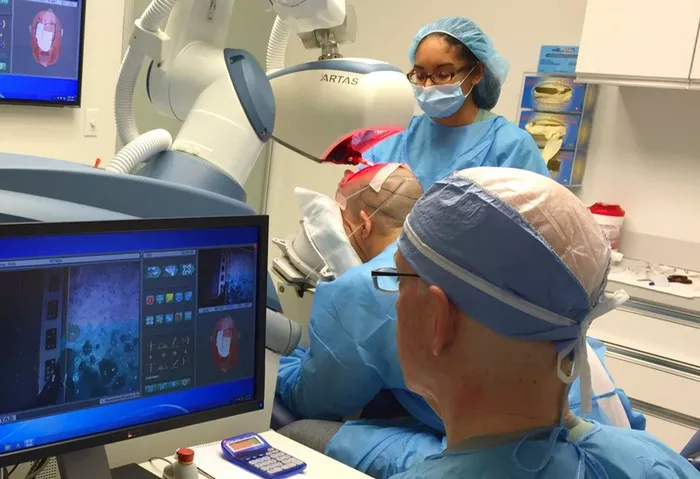A recent study published on September 19 in the Journal of Cosmetic Dermatology confirms that the ARTAS robotic hair transplant technology is both safe and effective for selecting and harvesting hair follicular units (FUs) in the treatment of male androgenetic alopecia (AGA).
Led by Yifei Zhu from the Shanghai Institute of Dermatology at Fudan University, the study compared the efficacy and safety of the ARTAS system against the traditional follicular unit excision (FUE) method. The research involved 13 Chinese male patients aged 25 to 35, each diagnosed with Norwood-Hamilton II to IV AGA. For the analysis, each patient’s donor site was divided into left and right regions, with one side treated using ARTAS and the other using FUE. The study measured and compared the yield, transection, and discard rates of hair FUs from both techniques.
The findings revealed that while the total yield rate was slightly lower on the ARTAS side (82.05 percent) compared to the FUE side (90.03 percent), this difference was not statistically significant. However, the total discard rate was significantly higher for ARTAS (10.71 percent) compared to FUE (5.46 percent). The transection rate was lower for ARTAS (13.17 percent) than for FUE (13.96 percent), although this difference was also not statistically significant. Importantly, patient satisfaction remained consistent across both methods, and no side effects or complications were reported during or after the procedures.
The authors noted, “While the yield rate is lower in ARTAS (not statistically significant), the transection rate is lower. Clinically, this means that follicles once successfully harvested by ARTAS have a higher chance to be of higher quality compared to FUE counterparts.”
This study reinforces the potential of ARTAS as a reliable option for those seeking treatment for male AGA, offering insights into its effectiveness and safety compared to conventional techniques.
You Might Be Interested In:

